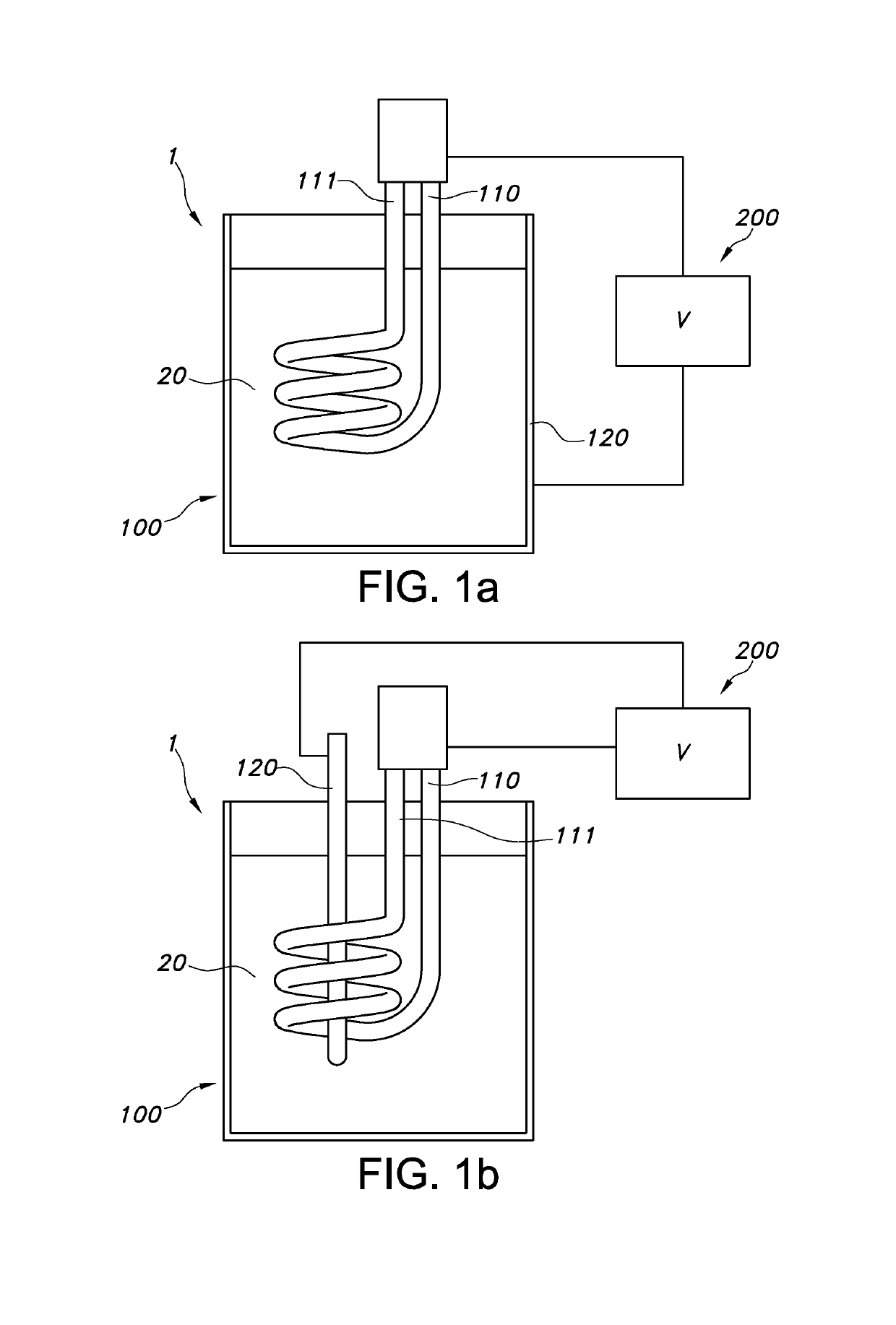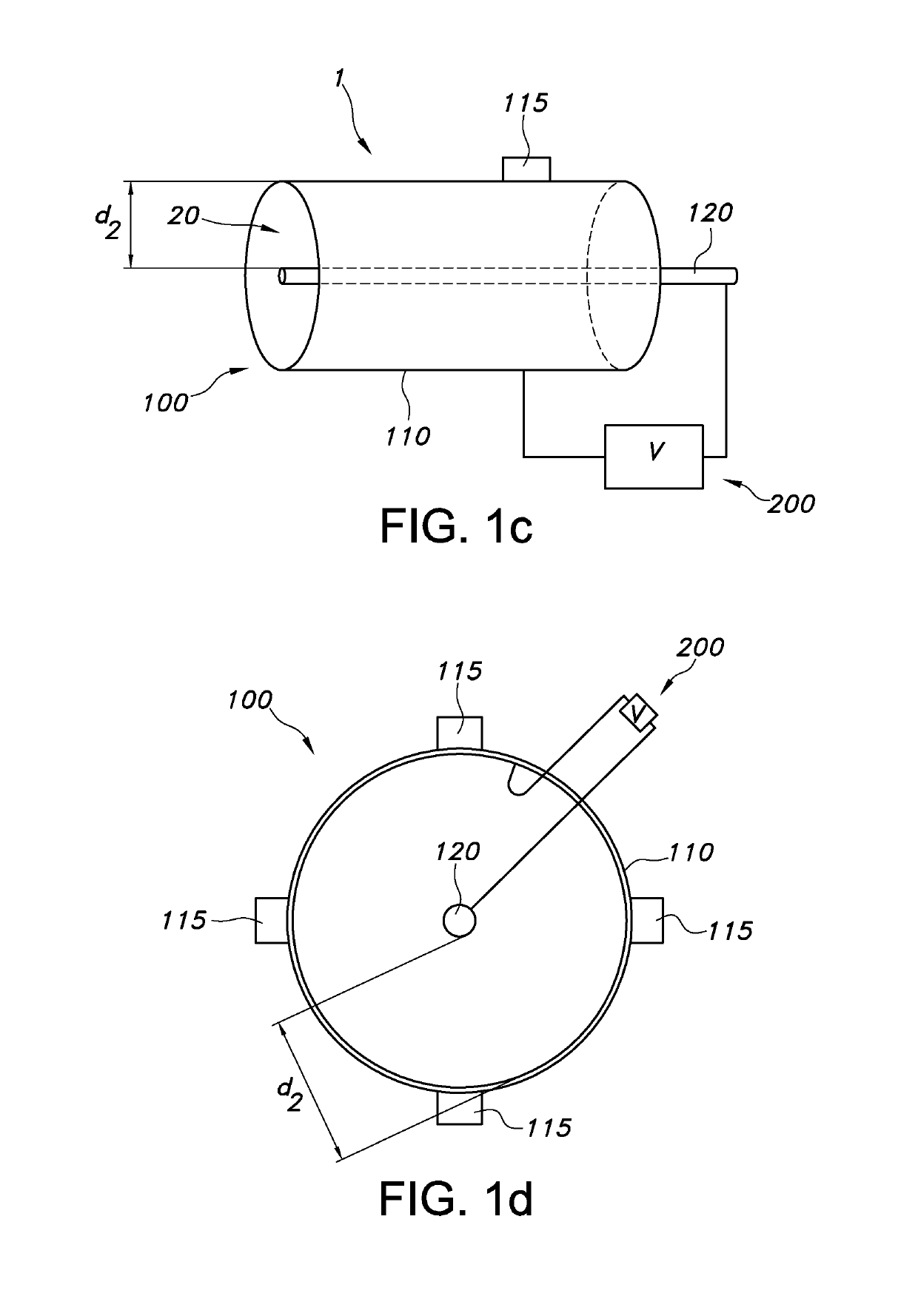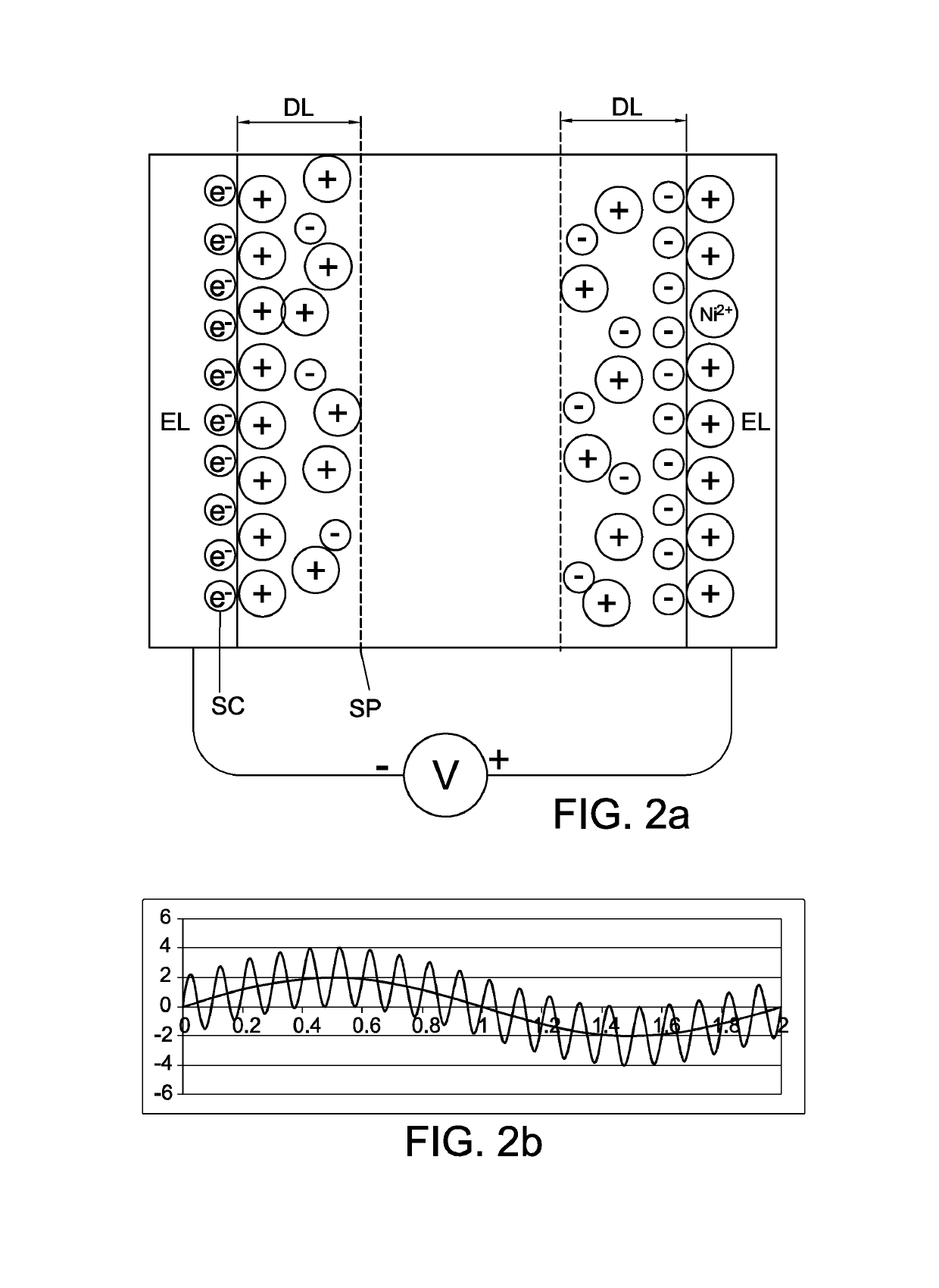Electrochemical descaling by pulsed signal reversal
a pulsed signal and descaling technology, applied in lighting and heating apparatus, heating types, immersion heating arrangements, etc., can solve the problems of scale formation on heating elements, reduced steam generation devices, and inability to be used anymore, so as to prevent or reduce scaling and prevent or reduce the formation of scale on heating elements
- Summary
- Abstract
- Description
- Claims
- Application Information
AI Technical Summary
Benefits of technology
Problems solved by technology
Method used
Image
Examples
examples
Water Preparation
[0081]Stock solutions of CaCl2.2H2O (65.6 gr / ltr), MgSO4.7H2O (38 gr / ltr) and NaHCO3 (76.2 gr / ltr) were made. Standard hard water was made by mixing 50 gram of each stock solution into 9 liter of de-ionized water and adding up to 10 liter. The resulting water had a total hardness of 16.8 0DH and a temporary hardness of 11.2 0DH. Total hardness is defined as 2.8×2×[mmol / ltr Ca+mmol Mg / ltr]. Temporary hardness is defined as 2.8×[mmol HCO3− / ltr]
Corrosion Experiments (Low Temperature)
[0082]In the following examples the effect of various parameters is shown especially on the corrosion of the electrodes when the amplitude is increased. In a typical experiment two stainless steel electrodes (316 grade) of 2.5 and 6 mm diameter were immersed in a beaker filled with standard hard water. Water was heated to 75° C. and an electrical signal was applied across the electrodes. Current was run for 30 minutes and electrodes inspected visually.
experiment 1
[0083]A sinusoidal AC signal of 3V and 0.5 Hz was applied across the two electrodes. Severe corrosion occurred at both electrodes.
experiment 2
[0084]An AC signal of 3V and 0.5Hz was modulated with 100 Hz at 80% duty cycle and applied on the two electrodes as in previous experiment. After 30 min the electrodes were visually inspected. The small (2.5 mm) electrode showed a weak yellow cast while the 6 mm electrode was colorless.
PUM
| Property | Measurement | Unit |
|---|---|---|
| frequency | aaaaa | aaaaa |
| frequency | aaaaa | aaaaa |
| AC frequency | aaaaa | aaaaa |
Abstract
Description
Claims
Application Information
 Login to View More
Login to View More - R&D
- Intellectual Property
- Life Sciences
- Materials
- Tech Scout
- Unparalleled Data Quality
- Higher Quality Content
- 60% Fewer Hallucinations
Browse by: Latest US Patents, China's latest patents, Technical Efficacy Thesaurus, Application Domain, Technology Topic, Popular Technical Reports.
© 2025 PatSnap. All rights reserved.Legal|Privacy policy|Modern Slavery Act Transparency Statement|Sitemap|About US| Contact US: help@patsnap.com



